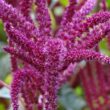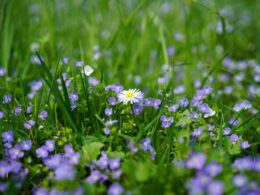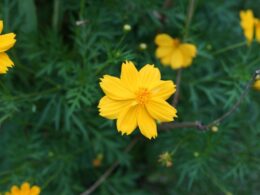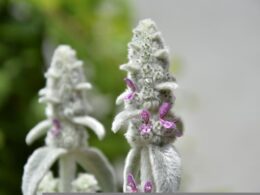This guide will teach you everything you need to know about the blue thistle flower, from planting to harvesting. So read on and add some blue thistle flowers to your garden today!
Blue Thistle Flower: Morphology
The blue thistle flower is a member of the Asteraceae family and is native to Europe. The plant grows to a height of 4-5 feet, and has erect, branched stems. The leaves are lanceolate to oblong in shape and have serrated margins. The flowers are borne in capitula (head-like inflorescences) and are blue or violet in colour. Each capitulum consists of many florets (miniature flowers). The blue thistle is the state flower of Scotland.
The blue thistle flower has a number of interesting morphological features. For example, the leaves have very sharp spines on their margins, which can cause skin irritation. The flowers are also very striking, with their blue or violet coloration. The blue thistle is a beautiful flower and is a popular choice for gardens and floral arrangements.
Habitat
The blue thistle is a native of Europe and is found in countries such as France, Spain, Portugal, Italy, and Greece. The plant prefers to grow in sunny locations with well-drained soils. It is often found on the edges of fields or roadsides.
Uses
The blue thistle has a number of uses. The leaves and stems can be used to make a herbal tea. The flower heads can be added to salads or used as a decoration. The plant is also used in traditional medicine, for the treatment of conditions such as coughs, colds, stomach upsets and skin problems. They are also very popular in wildflower bouquets, in flower arrangements, as a boutonniere flower, etc.
Types
There are a number of different types of thistle flowers, which vary in their appearance and habitat. The most common type is the common blue thistle, which is found in Europe and Asia. Other popular types include globe thistle, eryngium, milk thistle and artichoke thistle.
Blue Thistle Flower: Growing Guide
The blue thistle flower is a beautiful, unique, herbaceous perennial weed. These flowers are relatively easy to grow and care for, making them a great option for beginner gardeners.
When to Plant
Blue thistle flowers can be planted in either spring or fall. If you live in an area with mild winters, you can plant blue thistle seeds in early spring. Otherwise, it is best to wait until late spring or early summer to plant them. This will give the seeds enough time to germinate and grow into strong, healthy plants.
Where to Plant
Blue thistle flowers prefer full sun and well-drained soil. If your garden does not get a lot of direct sunlight, you can try growing them in partial shade. Just make sure that they still receive at least 6 hours of sunlight each day.
How to Plant
Before planting blue thistle seeds, soak them in water for 24 hours. This will help them germinate faster and grow into strong plants. Once they have been soaked, plant the seeds about 1/2 inch deep in the soil. Be sure to space them at least 12 inches apart so that they have room to spread out.
Watering and Fertilizing
Blue thistle flower is relatively drought-tolerant, so they do not need to be watered very often. However, they will need to be watered more frequently if you live in an area with high temperatures and low humidity. Be sure to check the soil before watering, as you only need to water the plants when the soil is dry.
These blue flowers do not need to be fertilized, but you can add a slow-release fertilizer to the soil at planting time if you wish.
Pruning
Blue thistle flowers do not require much pruning. However, you may want to cut back the plants in late fall or early winter to help them bloom more vigorously in the spring.
Common Pests and Diseases
Blue thistle flower is relatively resistant to pests and diseases. However, they can be susceptible to rust if they are grown in humid conditions. If you notice any signs of rust on your plants, be sure to remove the affected parts of foliage and dispose of them properly.



















